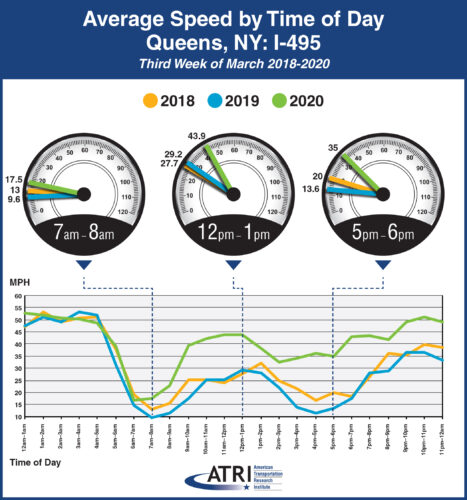Trucks continue to move – in many cases faster than usual – to respond to the demands placed on the industry by the COVID-19 pandemic.
ATRI’s GPS data analysis on freight flows of more than a million heavy-duty trucks from March shows an unprecedented level of truck movement, that trucks continue to move at safe speeds well in excess of normal traffic patterns.
Below are the findings from several areas hit hard by the virus and subject to quarantines and lockdowns:
- According to ATRI’s data, at the intersection of I-85 and I-285 in Atlanta, known locally as Spaghetti Junction, afternoon rush hour truck speeds are typically less than 15 MPH due to congestion. During the week ending March 20, 2020, truck speeds averaged 53 MPH.
- In New York, along I-495 in Queens, the afternoon rush hour typically sees average truck speeds of 16 MPH. Speeds have now more than doubled, averaging 38 MPH, still below the posted speed limit but certainly an improvement.
In Los Angeles, at the intersection of I-710 and I-105, truck speeds during highly congested morning rush hours are normally less than 25 MPH between the hours of 6 and 8 a.m. Truck speeds are now averaging 53 MPH in the morning as Californians stay home but truck deliveries increase.
At the Byrne Interchange in Chicago, where I-290 intersects with I-90/I-94, morning truck speeds are now averaging 43 MPH, more than twice the typical morning rush hour speed of 20 MPH.
These results can be explained by several COVID-19 related factors: first is the dramatic reduction in commuter traffic, allowing trucks to operate at higher speeds, particularly during traditional rush hours. Second, is the continuous 24/7 truck operations that generate higher average truck speeds across nearly all hours of the day.
ATRI’s analysis used truck GPS data from more than a million heavy-duty trucks and the locations examined included some of the nation’s top truck choke points.






